Shiplap is sort of rustic, sort of raw and sort of looks like it should be installed outside rather than in. So it makes perfect sense, at a time when sliding barn doors are all the rage, that shiplap is a hot choice for cladding interior walls and ceilings. But what is shiplap? How can you spot it and where might you use it?
What Is Shiplap?
A shiplap board is milled with a halved groove called a rabbet, so the edges connect snugly together, one on top of the other, leaving a distinctive reveal line between boards.
It installs in a slightly different manner than tongue and groove paneling, where the tongue of one board sets inside the channel of the adjacent board. Tongue and groove paneling can provide a tighter seal, and less of a visible reveal, between boards.
Painted
The material can be rough-hewn, but it is usually smooth, accommodating various paint colors and sheens. Many of the examples you will find show the material painted white, fitting minimalist, modern sensibilities while accommodating the popular cottage white look.
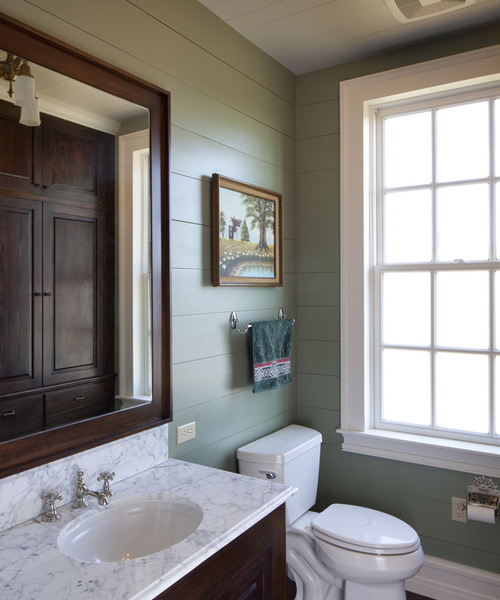

VOH ARCHITECTS, ORIGINAL PHOTO ON HOUZZ
Pop It With Color
The painted example seen here is a departure from the common white, bringing a fresh, new color to the mix for a comforting effect.
?
Is It Modern, Industrial or Traditional?
Answer: all of the above. Shiplap wood siding can be painted or stained and set horizontally (most common) or vertically. It adds a distinctive, textured element that can complement a variety of styles.
It is less labor intensive than more refined interior flat panels and can offer a handsome combination of warmth and durability to your living environment.
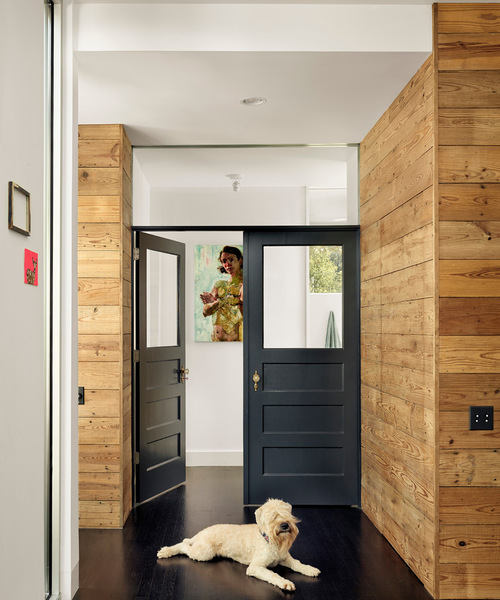

HUGH JEFFERSON RANDOLPH ARCHITECTS, ORIGINAL PHOTO ON HOUZZ
Stained Wood Example
Shiplap is commonly pine or cedar, but it can be found in many other types of wood as well — something to consider if you are staining your material.
Stained shiplap offers a more earthy, natural feel, and it can be stained in dark, rich tones or a lighter shade, like the example here.
You also can find reclaimed shiplap material and distressed options, giving your project an instantly authentic and aged appearance.
Outside and In
There was a time when it was cheaper to finish interior walls in shiplap wood boards than plaster. There are plenty of examples where carpenters have discovered old shiplap material during remodels and demolitions, with drywall or wallpaper covering original shiplap in old structures.
Shiplap also was used as an exterior siding material, and over time this became its predominant use.
Interior Wall Paneling
Though wood shiplap is rarely used in lieu of drywall anymore (it is installed over drywall in most cases), the relative ease of installation and the warm, textured look have made shiplap a popular choice among discriminating designers and everyday do-it-your-selfers.
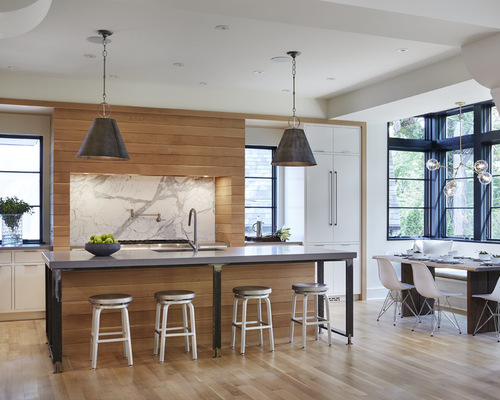

CHARLIE & CO. DESIGN, LTD, ORIGINAL PHOTO ON HOUZZ
Modern Aesthetic
But shiplap goes just as well with more modern looks too, and in the kitchen here, natural stained shiplap material gives the island and hood surround over the cooktop a bold and unifying swath of texture.
Ask a Pro About Shiplap Siding
Ceilings
Like beadboard paneling, shiplap material can add some style to bare ceilings, complementing other home textures and features nicely.
Fake It
We won’t tell. There are various ways to fake the shiplap look. One method is to install non-shiplapped wood boards with 2-millimeter tile spacers (or even nickels), giving the illusion of shiplap reveals between the boards. There are MDF panels, concrete boards and tile products that can be installed in a manner replicating the look of wood shiplap. There are even wallpapers stamped in shiplap designs.
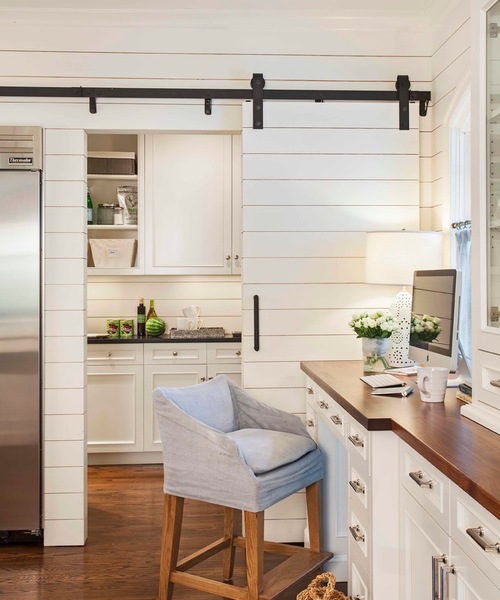

ALAIR HOMES CHARLOTTE, ORIGINAL PHOTO ON HOUZZ
Country Charm
Shiplap fits the casual, country charm many consumers are gravitating toward today. In the photo here, the barn door itself is constructed in shiplap material.
DIY
It is easier to install shiplap material than other types of paneling, although it will require some carpentry skills. Depending on the specifics of your job and chosen material type, installing shiplap siding can be a rather easy and quickly rewarding home improvement task. You’ll need to be somewhat handy with a saw (and familiar with the old standby advice of measure twice and cut once). Material usually costs from $2 to $5 per square foot of coverage.
For professional carpenters, installing shiplap material is about as simple as it gets, though it likely will double the cost of the installation.
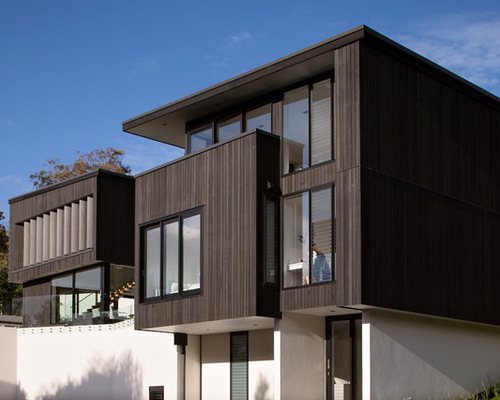

Daniel Marshall Architect, original photo on Houzz
Vertical Installation
This modern home has traditional shiplap siding installed vertically. It is a less typical installation method, fitting the strong, almost imposing style of the exterior.
Shiplap is nothing new and is not cutting edge, yet when it comes to interior paneling, shiplap today is the hottest thing going. Add it to one wall for a nice focal point, or change the entire look of your home and install it everywhere.
You can do it yourself, you can fake it or you can go old school and use shiplap as exterior siding. Because sometimes the hottest new thing has actually been around forever.


